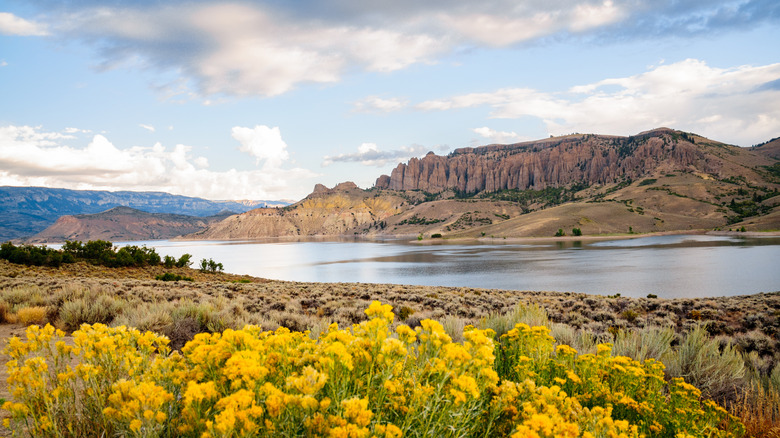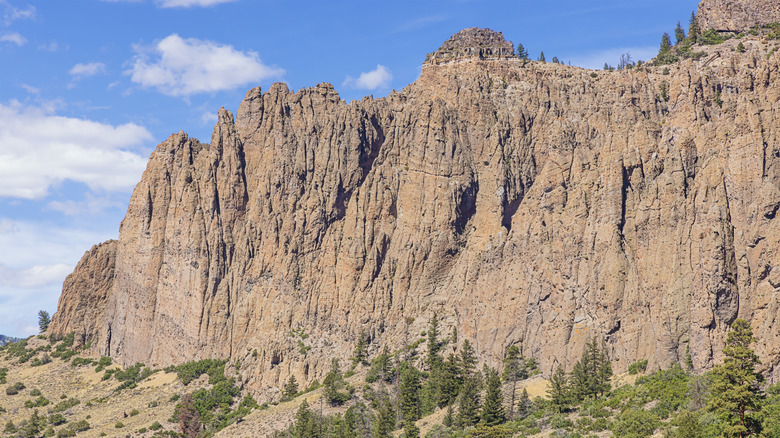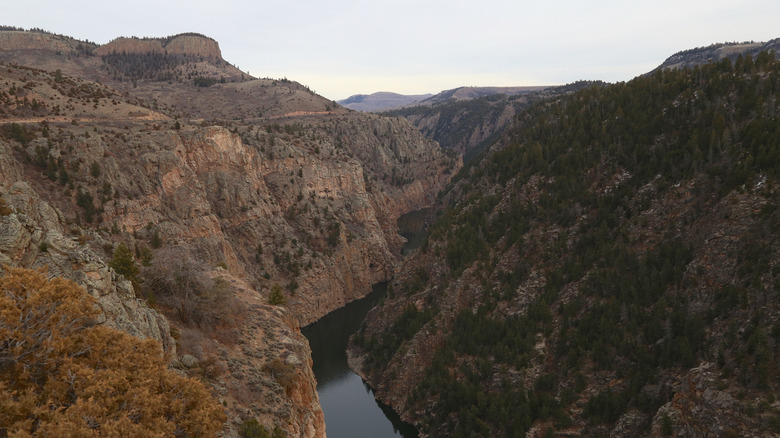Spend one minute in the Curecanti National Recreation Area and you’ll likely agree that it’s among the best destinations to visit in Colorado. Going toe to toe with the likes of Rocky Mountain National Park and the Garden of the Gods — a Colorado park known for its mesmerizing red rock beauty — Curecanti boasts many Instagrammable sights of its own. This wildly underrated geological gem takes up more than 43,000 acres of land in the southwestern nook of the state, right on the outskirts of Gunnison, Colorado. The small mountain town serves as the gateway to this rugged attraction and has a regional airport as well as plenty of accommodations to spend a night or two.
Sandwiched between The Colorado Plateau and southern Rocky Mountains, this otherworldly landscape is a juxtaposition of towering mesas and deep canyons smothered in rolling sagebrush hills and swaths of ponderosa pines. Snaking along the Gunnison River, the water is a stark contrast to the region’s surrounding high desert landscape. Its fascinating geology consists of ancient rock formations etched with dinosaur fossils.
Dams were installed not long after the Curecanti National Recreation Area’s founding in 1965, creating three distinct reservoirs: Morrow Point, Crystal, and Blue Mesa, the lattermost of which serves as Colorado’s largest body of water. The flanking roadways — U.S. Highway 50 and Colorado Highway 92 — grant visitors access to all that this region has to offer, from marinas and campgrounds to scenic vistas and trailheads.
Explore the waters and trails of Curecanti
From hiking and boating to camping and paddleboarding, there are a number of ways you can experience the beauty of the Curecanti National Recreation Area. If you want to explore the rugged reserve on foot, there are plenty of trails for hikers of all skill levels. For an easy jaunt, opt for the 1-mile Neversink Trail, which is a popular birding spot for woodland species, so be sure to have your binoculars at the ready.
If you want to try something a little more challenging, hit the Dillon Pinnacles Trail. The path will take you about 2 miles into the reserve to see the Dillon Pinnacles, an eroded volcanic formation perched right along the Blue Mesa Reservoir. The reservoir is definitely a must-see, especially if you love to be on the water. With nearly 100 miles of shoreline, you can take a refreshing dip in the chilly water or explore via paddleboard, kayak, canoe, or by boat with a permit. There’s even a windsurfing beach, dubbed the Bay of Chickens, if that’s your thing.
If you really want to brave the Colorado wilderness, the recreation area has nearly a dozen campgrounds to reserve. The Elk Creek and Lake Fork Campgrounds are right on the shore of the Blue Mesa Reservoir, with nightly camping fees ranging between $12 and $34, at the time of writing. Be sure to check the National Park Service’s website for availability as some campsites are not open year-round.
Prefer something more educational? History buffs can tour the Cimarron Canyon Rail Exhibit, located near the Morrow Point Dam. It features a restored locomotive atop an antiquated railroad trestle bridge alongside a coal tender, boxcar, and caboose.




